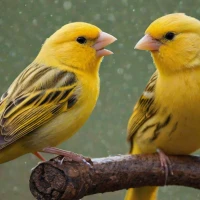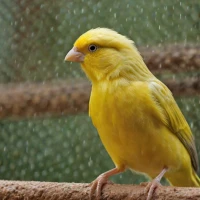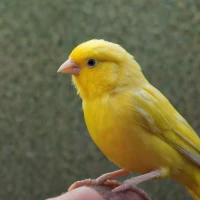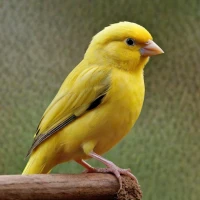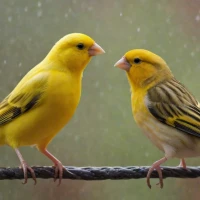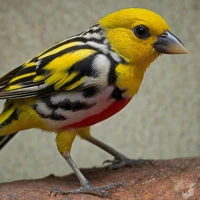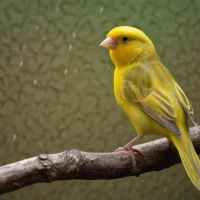Discovering the Japanese Hoso Canary: A Petite Gem in the Avian World
You know, I remember the first time I laid eyes on a Japanese Hoso Canary. It was at an avian show a few years back, and I was absolutely smitten. These tiny birds, with their slender bodies and graceful postures, stood out magnificently. My friend Alex, who’s an avid bird breeder, nudged me and said, “If elegance had wings, it would be a Hoso.”
A Brief History and Origin
The Japanese Hoso Canary originated, unsurprisingly, in Japan. Developed in the early 20th century by crossing the Belgian Canary and the Japanese Hoso Bunt, they became known for their slim and elongated posture. The word “Hoso” itself means “slender” or “thin” in Japanese, reflecting their delicate appearance. Isn’t that just fitting?
Physical Characteristics
One of the most striking features of the Japanese Hoso Canary is its unique body shape. Standing at around 4.5 inches, they have a distinctly slender frame and an elegant curve reminiscent of an archer’s bow. Their feathers have a silky feel, and their colors, ranging from vibrant yellows to soft greens, can be truly mesmerizing. When I saw them up close, their delicate feathers almost shimmered under the show lights.
Temperament and Behavior
Personality-wise, these canaries are quite the charmers. They’re generally easygoing and friendly, making them great companions. Unlike larger, more boisterous birds, the Japanese Hoso Canary is relatively quiet, with a soft, melodic song that is soothing to the ears. My cousin Lucy, who owns a few, always says they bring a kind of zen to her home.
Care and Maintenance
Caring for a Japanese Hoso Canary may involve a bit of dedication, but it’s oh-so-rewarding. Their diet needs to be balanced with seeds, fresh greens, and occasional protein sources like boiled eggs. Fresh water is crucial – and don’t forget the occasional treat! Conditions in their habitat should mimic their natural environment, meaning a spacious cage, natural sunlight, and a stable temperature.
Birds, much like us, need enrichment. Toys, perches, and even the odd safe plant can provide them with entertainment and comfort. I recall one of Alex’s favorite tricks – hanging varying lengths of string from different spots in the cage. It kept his birds busy for hours!
Health and Wellbeing
Keeping a Hoso Canary healthy is paramount. Regular vet visits, a clean living environment, and a nutritious diet go a long way in ensuring their wellbeing. It’s also important to be vigilant about signs of stress or illness. Common issues might include respiratory problems, mites, and nutritional deficiencies.
But don’t panic if you notice something off! Most problems can be managed effectively if caught early. I had a moment last year when my Hoso seemed a bit off – lethargic and not singing as usual. A quick trip to the vet revealed a minor vitamin deficiency, easily corrected with supplements.
Breeding Japanese Hoso Canaries
Breeding these little beauties is a journey full of surprises and rewards. My friend Mia successfully bred a pair last summer. She described the process as nerve-wracking but absolutely thrilling. The pairing, nesting, and eventual hatching of eggs demand patience and care. Providing a calm, stable environment, along with a diet rich in nutrients, is key. Watching the chicks grow and develop is nothing short of magical, she says.
Random Facts about Japanese Hoso Canaries
Here’s a fun fact: Did you know that Japanese Hoso Canaries often form stronger bonds with their owners compared to other canary breeds? They may even respond to their names when called. And here’s another tidbit – these canaries have been known to live up to 10 years under optimal care conditions.
Reflecting on the Experience
Overall, keeping Japanese Hoso Canaries as pets has been an enlightening experience for many, including myself. Their graceful demeanor, coupled with their soothing song, brings a touch of elegance and serenity to any home. Whether you’re a seasoned bird enthusiast or a beginner, these tiny wonders, with all their charm and splendor, are sure to capture your heart.
Finally, thanks a ton for reading! If you’re considering adding a Japanese Hoso Canary to your life, I say go for it! You won’t regret it. Remember, life is always better with a little tweet-tweet. 🐦✨



